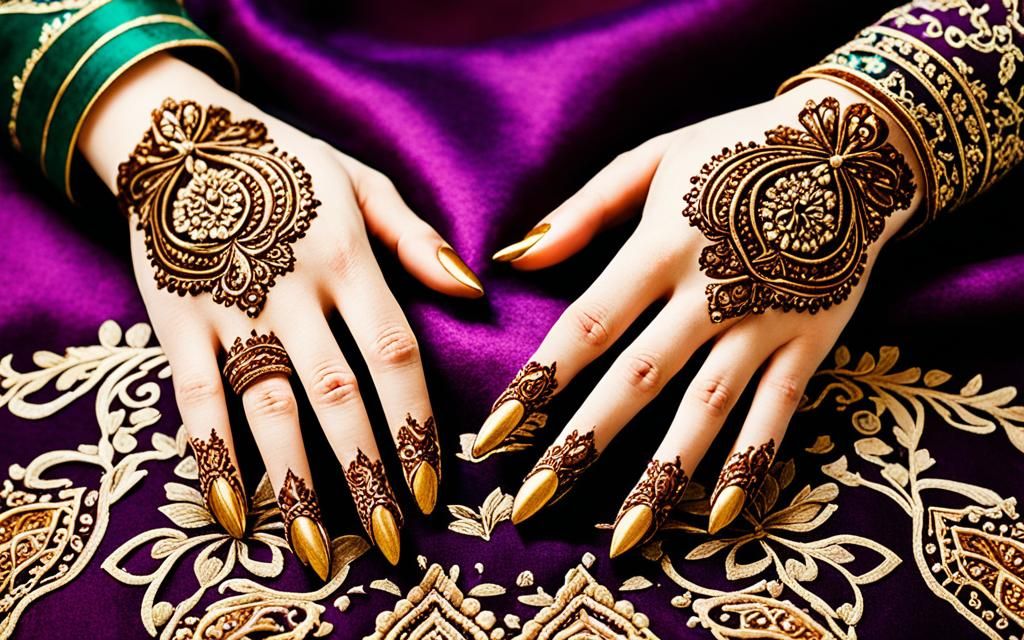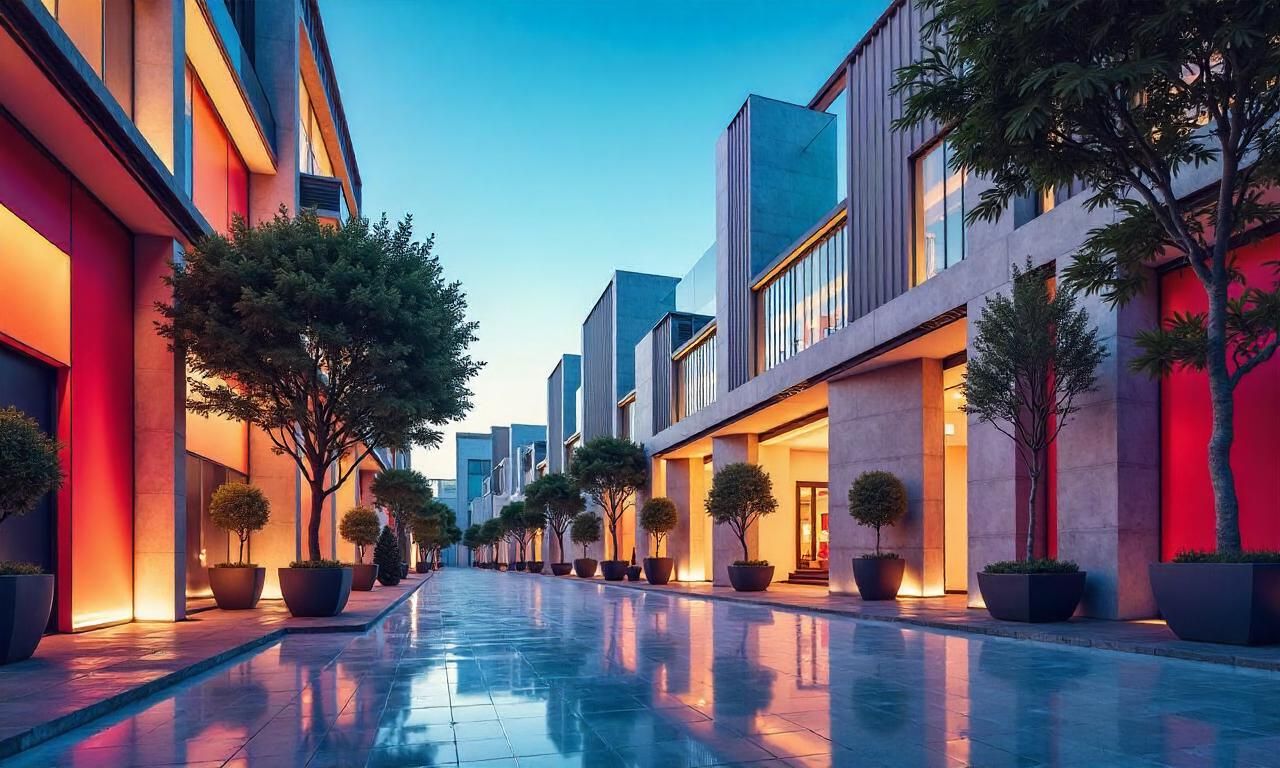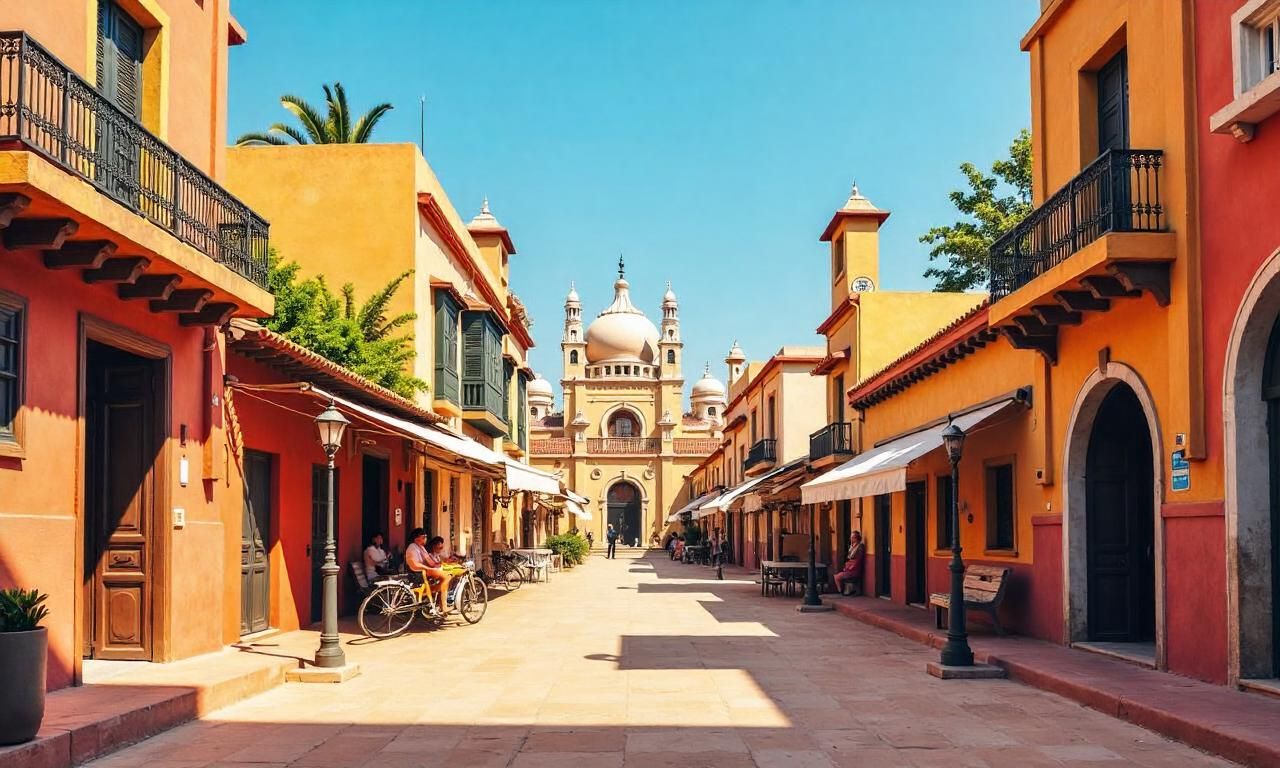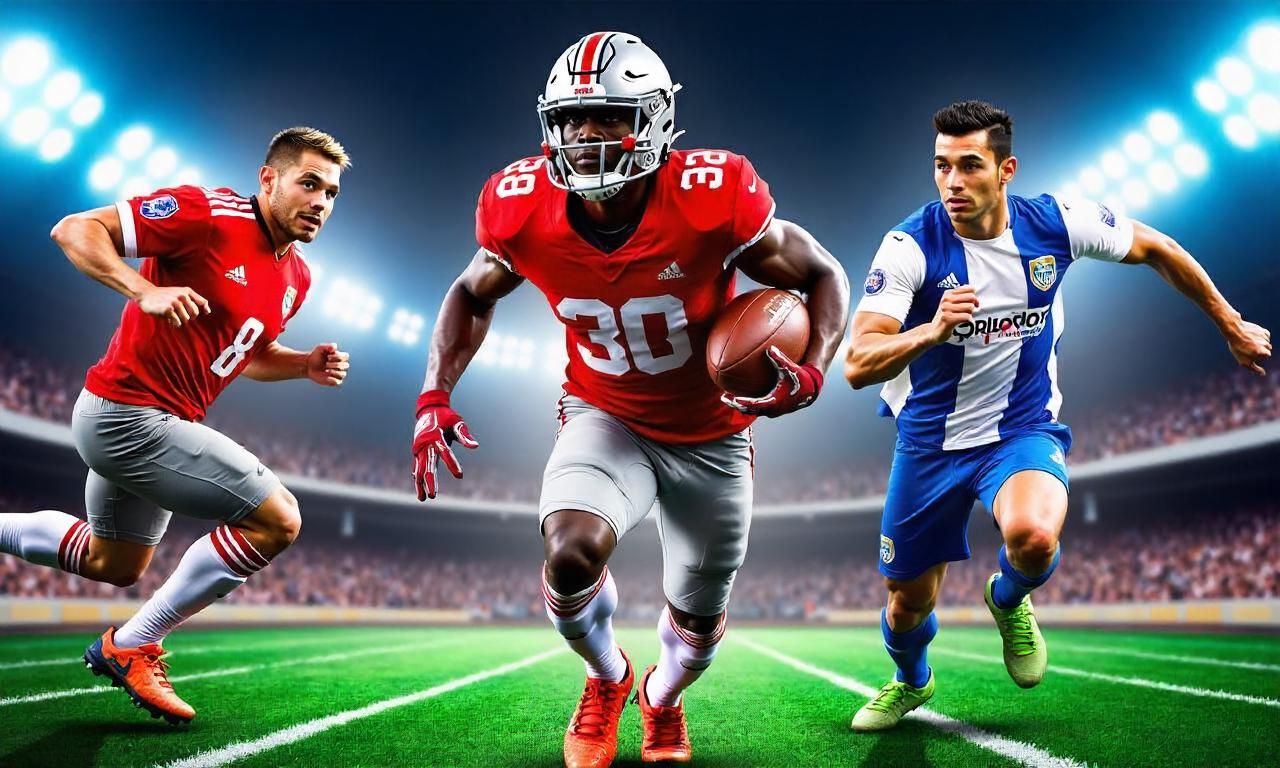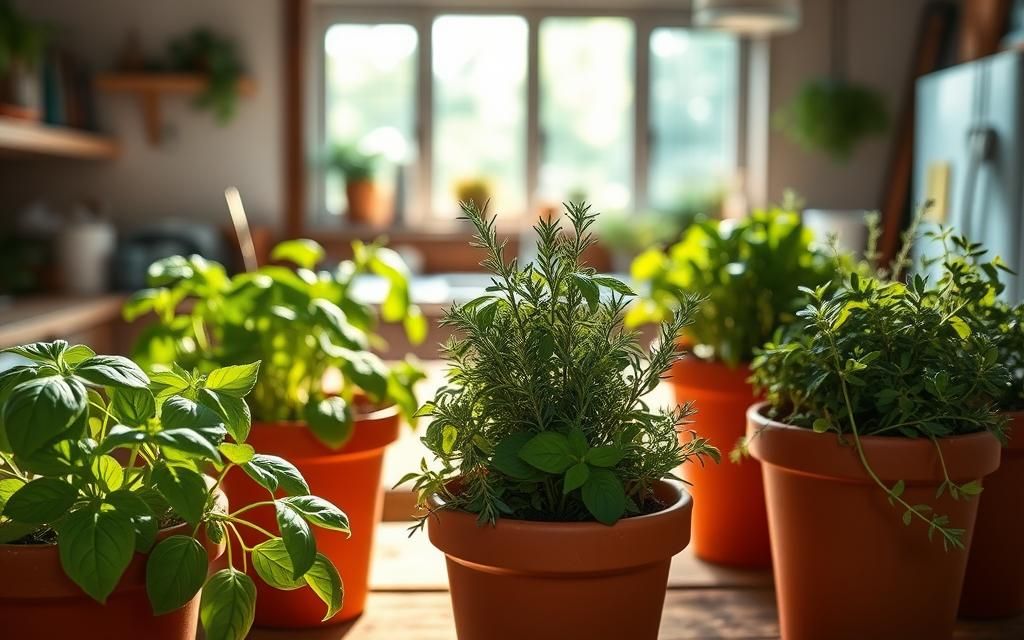This guide takes you on a journey into the heart of the Islamic faith. It shows the rich traditions and beliefs of over 1.5 billion Muslims around the world12. You’ll learn about the religion’s core beliefs, stunning architecture, festive times, and the importance of family in Muslim culture. This shows the wide range of Muslim culture and how Islam affects people everywhere.
The story of Islam began in the 7th-century Arabian Peninsula1. Muslims believe in one God, Allah, and follow five main practices. These beliefs and actions have shaped Muslim culture for over 1,400 years1.
Islam’s impact is seen in beautiful mosques and special celebrations like Eid and Ramadan13. This guide is for those wanting to learn more about this interesting faith. It offers a peek into the traditions that have lasted for centuries. Let’s explore the rich culture and lasting impact of the Muslim world together.
Table of Contents
ToggleIntroduction to Islamic Culture
Islam is a monotheistic religion that started in the 7th century in the Arabian Peninsula1. The word “Islam” means “surrender” or “submission” to Allah, the one God1. It was founded on the teachings of the Prophet Muhammad, seen as the final prophet in a line with Abraham, Moses, and Jesus1.
Definition and Origins of Islam
Today, Islam is the second biggest religion, with over one billion followers4. Most Muslims, 85%, follow the Sunni branch, while others follow the Shii branch and live all over the world4. It has a long history, starting in the 7th century CE with the Prophet Muhammad’s revelations that became the Quran1.
Fundamental Concepts and Beliefs
Islam’s core is the belief in one God and submitting to His will. It also stresses strict religious practices1. The Quran outlines five key duties, like confessing faith and giving alms, which are central to Islamic culture1.
Prayer is a key part of Islam, done five times a day4. Muslims also give alms, a 2% wealth tax4. In Ramadan, they fast from dawn to sunset4. Going to Mecca for pilgrimage is a must for many Muslims4.
Sharing income in Islam promotes social responsibility. The religious leaders include ulama and mullahs4.
The Spread of Islam Across the World
The spread of Islam was driven by its fair beliefs, laws against non-Muslims, and the wide reach of Muslim traders and mystics5. In just a century after the Prophet Muhammad’s death in 632 CE, Islam spread fast across the Middle East, North Africa, Europe, and Asia5. This led to a huge Arab Muslim empire. This empire was key in sharing Islamic culture, art, and knowledge worldwide6.
During the reign of the rāshidūn caliphs from 632 to 661 CE, trade on the Silk Roads played a big part6. Muslim merchants linked major ports in Asia, helping spread Islam to places like Indonesia and the Philippines by the 7th century5.
Over time, Islam grew and became a part of many cultures and societies6. Dynasties like the Umayyads and Abbasids helped spread Islam, blending it with local traditions for centuries6.
| Key Factors in the Spread of Islam | Impact |
|---|---|
| Egalitarian Ethos of Islam | Appealed to diverse populations, facilitating conversions |
| Official Discrimination Against Non-Muslims | Encouraged conversions to avoid social and economic disadvantages |
| Influence of Muslim Traders and Sufi Mystics | Spread Islamic teachings and practices through trade and spiritual teachings |
| Establishment of Caliphates and Muslim Dynasties | Played a significant role in shaping history and spreading Islam across various regions |
The process of Islamization was complex, blending Islamic ways with local customs over many years6. In places like India, Malaysia, Indonesia, and China, this led to diverse Muslim cultures6. The Ottoman Empire, covering much of the Middle East and North Africa, didn’t push for many conversions, but they still happened in places like the Balkans6.
The Arab Empire grew a lot after Prophet Muhammad’s death, creating vast caliphates7. Early caliphates worked on spreading their faith, using Imams to teach local people7. Dynasties like the Abbasids and Ottomans helped spread Islam even more7.
People converted to Islam in different ways, depending on their beliefs7. When old religions weakened, more people turned to Islam7. The Abbasid Caliphate saw many conversions, even outside its borders, in places like Africa and Central Asia7.
The Five Pillars of Islam
The Five Pillars of Islam are key beliefs and practices that shape the Islamic faith. They guide Muslims in their daily lives and devotion8.
Shahada: The Muslim Profession of Faith
The Shahada is the first pillar. It’s a declaration of faith in one God (Allah) and Muhammad as the final prophet. Muslims say this during their daily prayers9.
Salat: The Five Daily Prayers
Salat is the second pillar. It’s about the five daily prayers Muslims do, facing the Kaaba in Mecca. These prayers include Quran recitations and show their submission to Allah89.
In countries like Turkey, Saudi Arabia, and India, loudspeakers remind Muslims to pray five times a day8.
Before praying, Muslims wash themselves to prepare. The prayer involves standing, bowing, and prostrating in respect to Allah9.
The prayer schedule is flexible, allowing for combined prayers while traveling. This helps Muslims keep their religious duties even when it’s hard9.
| Pillar | Description |
|---|---|
| Shahada | The Muslim profession of faith in the oneness of God (Allah) and the acceptance of Muhammad as God’s final prophet. |
| Salat | The five daily ritual prayers that Muslims perform facing the direction of the Kaaba in Mecca. |
| Zakat | The obligatory charitable giving of a portion (typically 2.5%) of one’s wealth to support the Islamic community. |
| Sawm | The fast observed during the month of Ramadan, where Muslims abstain from food, drink, and other sensual pleasures from sunrise to sunset. |
| Hajj | The pilgrimage to the holy city of Mecca, which all able-bodied Muslims are required to undertake at least once in their lifetime. |
Zakat: Obligatory Charity and Almsgiving
As a Muslim, I have a key religious duty to give zakat, or obligatory charity. It’s one of the five Pillars of Islam, showing its big role in our faith. Zakat is 2.5% of what I have more than a certain amount called nisab each year1011.
In many Muslim-majority countries, giving zakat is a choice. But in places like Libya, Malaysia, Pakistan, Saudi Arabia, Sudan, and Yemen, it’s required and collected by the government10. This matches the Quran’s stress on giving to others as part of our faith10.
The tradition of zakat is big in Islam, with lots of talks about it in trusted books like Sahih Bukhari and Sahih Muslim10. There’s a lot of debate among scholars about zakat, like what wealth is taxed, how much to give, and who can get zakat10.
It’s thought that Muslims spend between $200 billion and $1 trillion a year on charity, both required and extra11. This shows how big of an effect zakat and other Islamic charity have on our communities11.
I aim to give my zakat with a true heart, knowing it cleans my wealth, helps others, and spreads our faith’s key values of kindness and fairness1011.
Sawm: Fasting During Ramadan
The Islamic faith values the practice of fasting, called Sawm, during Ramadan12. This holy month is the ninth in the Islamic calendar12. Muslims fast from sunrise to sunset during Ramadan12. Everyone must fast, except for those who are sick, pregnant, traveling, elderly, or menstruating12. If someone misses a fasting day, they can make it up later in the year12.
Sawm helps Muslims grow in self-control, empathy, and spirituality13. It also honors the Quran’s revelation13. Ramadan starts and ends with the crescent moon’s appearance13. It moves 10–12 days earlier each year because the Muslim calendar is shorter13. The Night of Power, a special night, falls on one of the last 10 nights of Ramadan13.
During Ramadan, Muslims don’t eat, drink, have sex, or do anything immoral from dawn to dusk13. They break their fast with ifṭār after sunset13. Tawarīḥ prayers are often said together at the mosque during Ramadan13. Those who are sick or traveling can make up any missed fasts after Ramadan13. Some people, like children or the elderly, don’t have to fast13.
Eid al-Fitr ends Ramadan and is a big holiday for Muslims13. Ramadan is a time for spiritual growth, community, and personal development for Muslims worldwide14. Muslims don’t eat or drink from dawn to sunset during Ramadan14. After sunset, they break their fast with iftar, often starting with dates and water or milk14.
| Aspect | Description |
|---|---|
| Duration of Ramadan | 14 Muslims fast during the holy month of Ramadan, which lasts for 30 days14. Ramadan shifts approximately 11 days earlier each year on the Gregorian calendar14. |
| Fasting Exemptions | 14 Fasting during Ramadan is mandatory for all healthy adult Muslims; exemptions include children who have not reached puberty, the elderly, pregnant women, and travelers14. |
| Eid al-Fitr Celebrations | 14 Muslims celebrate Eid al-Fitr, a three-day holiday after Ramadan to mark the end of fasting14. Traditional foods for Eid al-Fitr vary based on cultural origins, with North Africa enjoying tajines, Eastern Europe and Asia favoring mantis, and Indonesia and Malaysia preparing beef rendang14. Sweets are popular during Eid al-Fitr celebrations, with choices such as baklava, ma’amoul, saviya, mithai, ghraybeh, and Turkish delights14. Non-food traditions during Eid al-Fitr include gifting toys to children, engaging in fun activities like face painting, exchanging money or goody bags, and providing charity to those in need14. |
The Hajj: Pilgrimage to Mecca
The Hajj is a yearly journey for millions of Muslims to Mecca. It’s a deep spiritual trip. At its core is the Kaaba, built by Abraham and his son Ishmael15.
The Kaaba and Sacred Sites
The Kaaba is covered in black cloth with gold calligraphy. It’s the most sacred spot in Islam. During the Hajj, pilgrims circle the Kaaba seven times, showing devotion and unity15.
They also visit hills of Safa and Marwa. These hills are where Hagar, Abraham’s wife, looked for water for her son Ishmael15.
Rituals of the Hajj Pilgrimage
The Hajj is a life-changing event with many rituals. Pilgrims wear simple white clothes, called Ihram, to show purity and equality15. They meet at Arafat for prayer and forgiveness, then go to Muzdalifah and Mina to stone the devil15.
The journey ends with the sacrifice of an animal, remembering Abraham’s act15.
The Hajj is more than a trip; it’s a spiritual journey. It helps Muslims renew their faith, connect with others, and show devotion to Allah15. The Hajj saw fewer people in 2020 and 2021 due to the pandemic16. But, as things get back to normal, more people are expected to join in the future16.
Muslim Culture and Traditions
The Muslim world is full of culture and traditions, going beyond the Five Pillars. It’s filled with stunning mosques and Islamic festivals that celebrate important events and teachings4. These traditions show the amazing diversity of Muslim heritage.
Mosques and Islamic Architecture
Mosques are key symbols of Islamic communities. They have beautiful designs with grand domes and tall minarets. These features show the faith’s deep spiritual meaning.
The design of mosques is not just for looks. It also shows the faith’s beliefs and values. This makes the Muslim world’s visual culture unique.
Islamic Celebrations and Festivals
Throughout the year, Muslims celebrate important festivals. Eid al-Fitr and Eid al-Adha are two big ones4. They mark the end of Ramadan and the Prophet Ibrahim’s sacrifice.
Many Muslims also celebrate Mawlid, the Prophet Muhammad’s birthday. It honors his life and teachings.
| Celebration | Significance |
|---|---|
| Eid al-Fitr | Marks the end of Ramadan, the holy month of fasting |
| Eid al-Adha | Commemorates the Prophet Ibrahim’s willingness to sacrifice his son |
| Mawlid | Celebrates the birthday of the Prophet Muhammad |
The celebrations and architecture of the Muslim world show their deep traditions and beliefs4. From the beauty of mosques to the joy of festivals, these traditions highlight the richness and diversity of Islam.
The Role of Family in Islamic Culture
In the Islamic faith, the family is very important. Muslim families often include up to three generations, offering support and security17. It’s not recommended to marry later in life because people become less adaptable17. In the past, marrying within the family was common, but now it’s less so due to concerns about a smaller gene pool17.
Parents in Muslim families teach their kids important beliefs and behaviors. They teach kids how to pray and respect others. They also make sure their children love Allah and Prophet Muhammad deeply18. Extended families are key, offering support in good and bad times. They keep cultural traditions alive, help with unity, and pass on Islamic knowledge18.
There are clear roles in Muslim families. The head of the house takes care of money matters and makes decisions. Mothers look after the home and help raise the kids. Children respect their parents, and elders share their wisdom18. Modern Muslim families face challenges like blending traditional values with Western culture. They also deal with the effects of technology, busy lives, and balancing cultural identity with wider society18.
Female genital mutilation is not required by the Qur’an or Hadith, say many Islamic groups17. In Islam, sex between a married couple is seen as a blessed activity. Homosexual acts are discouraged17. The Muslim community values respect and love for everyone, no matter their sex, creed, or gender17.
Islamic Arts and Literature
Islamic culture has a rich tradition in art and literature19. Arabic calligraphy is a key part of this, linked to the Quran and the Muslim faith’s respect for writing19. Calligraphers have created beautiful lettering styles for mosques, religious texts, and more19.
Arabic Calligraphy and Its Significance
Islamic art started in the 7th century CE and includes works from people living in Muslim territories20. At first, it blended classical and Iranian styles, adding elements from Greco-Roman, Byzantine, and Sasanian traditions21. The Umayyad caliphate (661–750) was a key time for Islamic art21. Calligraphy, plant patterns, geometric shapes, and figures are key to Islamic decoration21.
Islamic arts cover many areas, like architecture, textiles, pottery, metalwork, and illuminated manuscripts19. The Quran and works by famous poets and scholars are central to Islamic literature19. Islamic art focuses on perfecting each piece, seen in poetry and arabesques19.
Islamic art often doesn’t show people or animals, but some art does include them20. There’s debate among art historians about what Islamic art really is, influenced by Western views20.
Despite different styles and influences, Islamic art keeps its unique quality and identity21. Scholars have gathered a lot of material, but it might not fully capture the art’s complexity19.
| Islamic Art Characteristics | Description |
|---|---|
| Calligraphy | A highly refined art form that is closely tied to the Quran and the written word in Islam. |
| Geometric Patterns | Intricate and repetitive geometric designs that are a hallmark of Islamic art and architecture. |
| Vegetal Patterns | Organic, plant-based patterns and motifs that are often used in Islamic art and decoration. |
| Figural Representation | Although traditionally avoided, some Islamic art includes representations of living beings. |
Diversity Within the Muslim World
Islam unites over 1.8 billion Muslims worldwide, despite their cultural and ethnic differences22. This shows how Islam has spread globally, blending with local customs. It’s a sign of the faith’s adaptability and strength.
The Sunni and Shia branches of Islam have their own traditions and beliefs23. In the Middle East and North Africa, many Sunnis don’t see Shias as true Muslims23. But outside this area, the Sunni-Shia divide matters less.
There are many other sects within Islam, each with their own views23. A survey found that in 32 countries, most Muslims believe there’s one right way to understand Islam23.
The Muslim community around the world has mixed Islamic traditions with local cultures22. For instance, in Chiapas, Mexico, Muslims combine Islamic beliefs with local culture. Women there wear colorful skirts and hijabs22.
Despite their differences, Muslims worldwide mostly share a common belief in one God and the Prophet Muhammad23. The Quran teaches us to respect different cultures within Islam22.
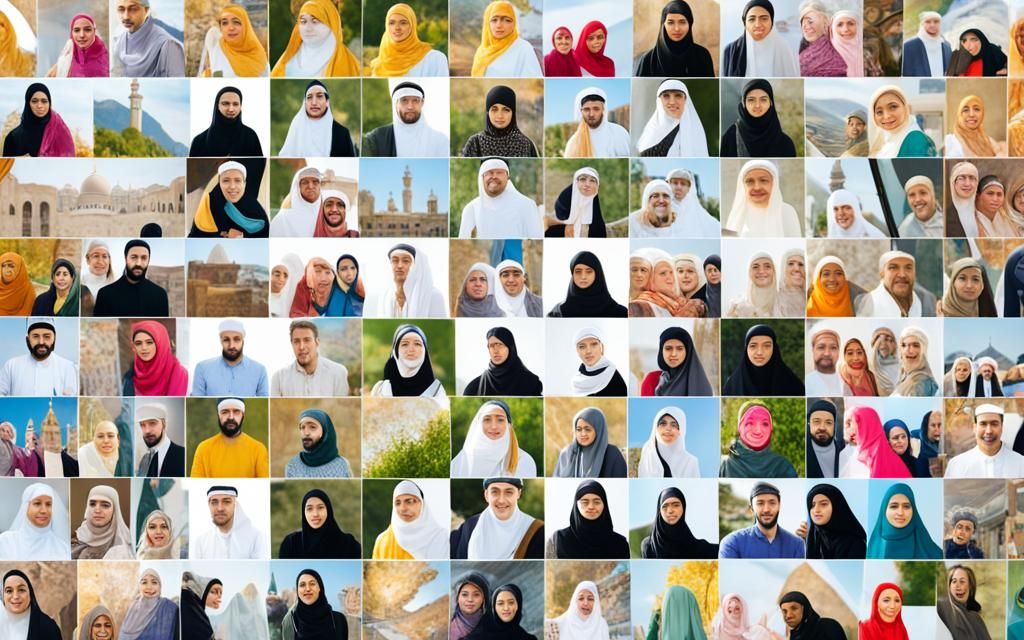
The diversity in the Muslim world shows how Islam can adapt and thrive in different cultures23.
A survey by the Pew Research Center found that 1.6 billion Muslims believe in God and the Prophet Muhammad22. In 2015, 1.8 billion people followed Islam, showing its global reach.
Conclusion
The journey into Muslim culture and traditions shows us the deep and complex beauty of the Islamic faith. With nearly 1.5 billion followers, Muslims make up a quarter of the world’s population. They live mainly in Asia and Africa, where they are the majority in thirty countries24. Yet, they also have a growing presence in Europe and North America, showing the faith’s adaptability.
The Five Pillars of Islam are the core beliefs and actions of the faith. They guide Muslims in their daily lives and shape their culture. Art, architecture, and community life also reflect these beliefs, enriching our world’s cultural heritage.
In many places, like South Asia and sub-Saharan Africa, there’s strong support for making sharia the law25. This shows the diversity within the Muslim community and the need for dialogue and respect.
Learning about the Islamic faith helps us value its dynamic culture. In the Arab world, over 93% of people call themselves Muslim, showing Islam’s big impact on Arab culture26. Islam’s core values of faith, justice, and community have stayed strong through time. By celebrating this diversity, we can build a more united and respectful world.
FAQ
What is the definition and origin of Islam?
Islam is a monotheistic religion that started in the 7th century in the Arabian Peninsula. The word “Islam” means “surrender” or “submission” to Allah, the one God. It was founded by the Prophet Muhammad, who is seen as the final prophet in a line including Abraham, Moses, and Jesus.
What are the fundamental beliefs and concepts of Islam?
Islam’s core beliefs focus on the oneness of God and submitting to His will. It also emphasizes strict adherence to religious practices. These beliefs shape Islamic culture and traditions.
How did Islam spread across the world?
Within a century after the Prophet Muhammad’s death in 632 CE, Islam spread quickly across the Middle East, North Africa, Europe, and Asia. This was due to its inclusive nature, discrimination against non-Muslims, and the influence of traders and Sufi mystics.
What are the Five Pillars of Islam?
The Five Pillars of Islam are key religious practices and beliefs: Shahada (declaration of faith), Salat (five daily prayers), Zakat (charitable giving), Sawm (fasting during Ramadan), and Hajj (pilgrimage to Mecca).
What is the significance of Zakat in Islamic culture?
Zakat, or mandatory charitable giving, is the third Pillar of Islam. All Muslims must give a part of their wealth to help the poor. It’s seen as purifying wealth, supporting social welfare, and promoting compassion and justice.
How is Ramadan observed in the Muslim faith?
Sawm, or fasting during Ramadan, is the fourth Pillar of Islam. Muslims don’t eat or drink from dawn to dusk as a spiritual act. This month is when the Quran was first given to the Prophet Muhammad.
What is the significance of the Hajj pilgrimage?
The Hajj is the fifth Pillar of Islam, a pilgrimage to Mecca. All Muslims should go if they can. It involves rituals like circling the Kaaba, showing devotion to Allah and connecting with the Islamic community.
How do Muslims express their culture and traditions?
Muslims express their culture through architecture, art, and celebrations. Mosques are known for their beautiful designs. Islamic art, like Arabic calligraphy, is deeply meaningful. They also celebrate festivals like Eid al-Fitr and Mawlid, marking important events in their faith.
What is the role of family in Islamic culture?
Family is crucial in Islamic culture. It’s highly valued, with clear roles for men and women at home. Islamic teachings guide on marriage, divorce, and child care. Family is seen in practices like hospitality and the respect for elders.
What is the significance of Arabic calligraphy in Islamic art and culture?
Arabic calligraphy is a key part of Islamic art, linked to the Quran and the faith’s reverence for writing. Calligraphers have created beautiful styles that decorate mosques and texts, showing the spiritual importance of calligraphy in Islamic culture.
How diverse is the Muslim world?
The Islamic world is diverse in culture, ethnicity, and religious practices. The Sunni and Shia branches have different traditions and beliefs. The Muslim diaspora has blended Islamic practices with local cultures, creating diverse expressions of the faith.
Source Links
- https://study.com/academy/lesson/islamic-muslim-culture-origin-traditions-beliefs.html
- https://www.britannica.com/topic/Islam
- https://www.pbs.org/wgbh/pages/frontline/teach/muslims/beliefs.html
- https://www.usccb.org/committees/ecumenical-interreligious-affairs/introduction-islamic-tradition
- https://en.unesco.org/silkroad/content/did-you-know-spread-islam-southeast-asia-through-trade-routes
- https://en.wikipedia.org/wiki/Spread_of_Islam
- https://courses.lumenlearning.com/suny-hccc-worldcivilization/chapter/spread-of-islam/
- https://theconversation.com/what-do-muslims-believe-and-do-understanding-the-5-pillars-of-islam-155023
- https://en.wikipedia.org/wiki/Five_Pillars_of_Islam
- https://en.wikipedia.org/wiki/Zakat
- https://www.investopedia.com/terms/z/zakat.asp
- https://www.nationalgeographic.com/culture/article/ramadan
- https://www.britannica.com/topic/Ramadan
- https://www.eatright.org/food/cultural-cuisines-and-traditions/holidays-and-celebrations/ramadan-the-practice-of-fasting
- https://www.britannica.com/topic/hajj
- https://en.wikipedia.org/wiki/Hajj
- https://www.imana.org/the-muslim-family-and-its-role-within-society/
- https://sahlahacademy.net/muslim-family-traditions/
- https://www.britannica.com/topic/Islamic-arts
- https://en.wikipedia.org/wiki/Islamic_art
- https://artistproject.metmuseum.org/toah/hd/orna/hd_orna.htm
- https://muslim.sg/articles/cultural-diversity-in-islam
- https://www.pewresearch.org/religion/2012/08/09/the-worlds-muslims-unity-and-diversity-executive-summary/
- https://kennedy.byu.edu/alumni/bridges/features/islam-and-western-culture
- https://www.pewresearch.org/religion/2013/04/30/the-worlds-muslims-religion-politics-society-overview/
- https://diversitybch.ucsf.edu/sites/g/files/tkssra5176/f/Arab Culture and Traditions.pdf

